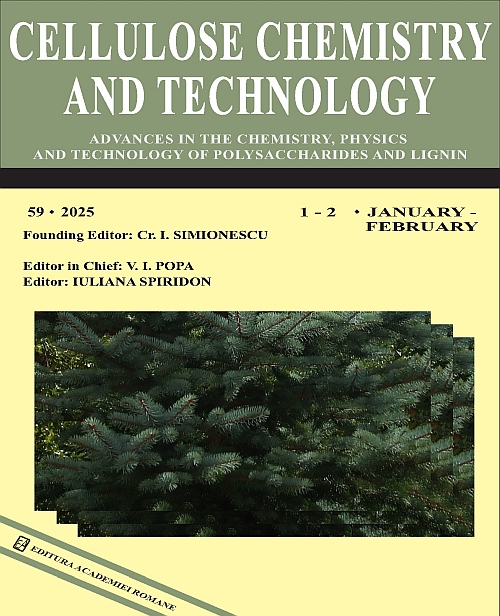|
Title
Fruit wastesourced pectin as natural co-coagulant for organic matter and turbidity treatment in wastewater
Authors
TRANG THI CAM TRUONG, DUONG NGUYEN THUY TRAN, ANH PHUONG LE THI,
NGAN THI THU PHAN, TAKAOMI KOBAYASHI and KHOA DANG NGUYEN
Received
October 2, 2024
Published
Volume 59 Issue 1-2 January-February
Keywords
bio-coagulant, fruit peel, pectin, wastewater treatment
Abstract
Bio-based coagulant agents are increasingly regarded as a viable partial substitute for synthetic coagulant compounds,
primarily due to environmental concerns. Pectin, being biodegradable, non-toxic, and applicable for the treatment of
various types of wastewaters, has shown potential as an effective chemical in the coagulation-flocculation process. In
this study, fruit peels, including grapefruit (GF), orange (OC), dragon fruit (DF), passion fruit (PF), and apple (AP) peels,
were collected from local markets and used as raw materials for the extraction of pectin, which was then combined with
poly aluminum chlorohydrate (PAC) in the water treatment process. The optimal conditions, namely, the material/solvent
ratio, pH, and extraction time, were investigated to evaluate the pectin content extracted from each type of fruit peel. The
results showed that the highest pectin content was extracted from passion fruit (12.2%), followed by grapefruit (10.4%),
orange (10.2%), dragon fruit (8.6%), and the lowest from apple (6.3%) peels. However, the degree of esterification was
observed to have the opposite tendency, which meant apple, dragon fruit and orange peels contained high-methoxyl
pectin, compared to grapefruit and passion fruit peels, which had low-methoxyl pectin. In the water treatment experiment,
the chemical oxygen demand (COD) gradually improved when poly aluminum chlorohydrate was combined with pectin
at a concentration of 15 mg/L. The enhancement in removal efficiency reached 30% for dragon fruit, approximately 50%
for grapefruit and orange, 58.2% for passion fruit, and up to 82.3% for apple peels. Regarding turbidity reduction, pectin
derived from orange, passion fruit, and apple peels, in similar amounts, achieved removal efficiencies of 58.1%, 67.6%,
and 83.8%, respectively. These findings indicated that pectin is a promising natural co-coagulant and deserves further
investigation for its application in wastewater treatment.
Link
https://doi.org/10.35812/CelluloseChemTechnol.2025.59.07
|



